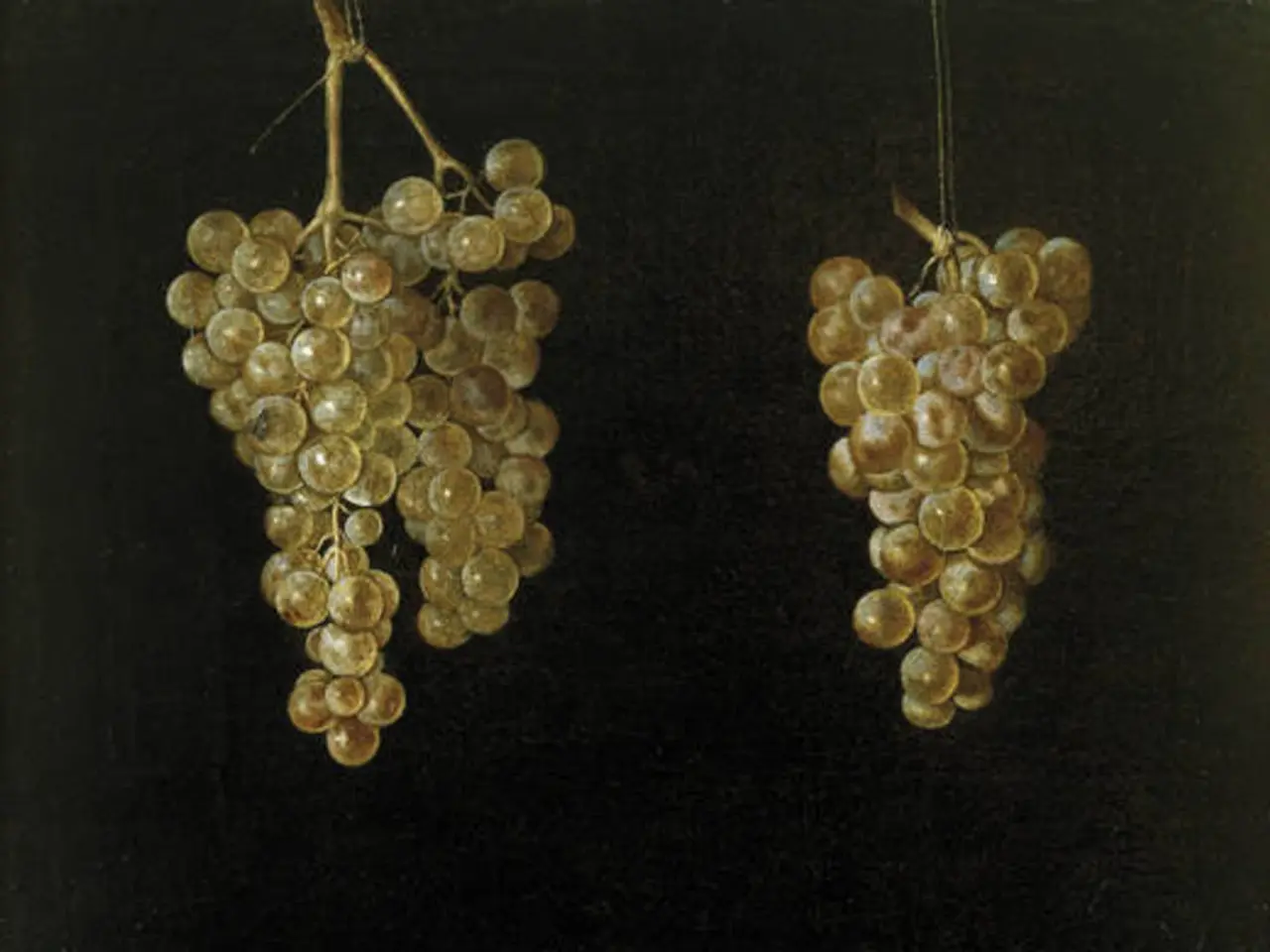Grape Eutypa Fungal Decay
In the world of grapevine cultivation, two significant diseases pose a challenge: Eutypa Dieback and Phomopsis Cane and Leaf Spot. These diseases, which were previously known as "dead-arm," have distinct causes and require different control methods.
Eutypa Dieback, caused by the fungus Eutypa lata, is the new name for the trunk and arm phase of the former "dead-arm" disease. The disease is characterised by a canker that forms around pruning wounds in older wood of the main trunk. This canker can extend up to 3 feet long, but does not enter one- or two-year wood and seldom goes below ground line.
The current control methods for Eutypa Dieback focus on cultural practices, timely pruning, sanitation, and preventative measures. Summer pruning during dry weather (July or August) helps create pruning wounds less susceptible to infection since the fungus enters through these wounds, especially in rainy conditions. Removing infected wood and bark showing V-shaped lesions also reduces fungal inoculum. Maintaining good vineyard sanitation by removing dead or infected canes and debris at the end of the growing season is crucial to minimise fungal spores in the environment. Delaying pruning or pruning in dry periods when possible can prevent spore spread and infection.
Phomopsis Cane and Leaf Spot, caused by Phomopsis viticola, is another threat to grapevine cultivation. This disease is characterised by red to black spots on shoots. Control methods for Phomopsis Cane and Leaf Spot include sanitation, such as removing infected cane and leaf debris to limit overwintering inoculum. Good canopy management to improve airflow and reduce humidity that favours fungal growth is also essential. Chemical fungicides may be used as preventive sprays, especially during early shoot development and rainy periods, although exact chemical control practices depend on regional recommendations and resistance management protocols.
Both diseases are related when they occur together. Integrated management, including thoughtful pruning timing, removing diseased plant material, and maintaining a clean vineyard, can reduce infection risk.
While current efforts strongly emphasise cultural controls and sanitation, research is ongoing for advanced biocontrol agents, genetic resistance, and sustainable disease management approaches to improve control outcomes in commercial vineyards.
In summary, Eutypa Dieback is controlled through summer pruning during dry weather, removal of infected wood, vineyard sanitation, and delayed pruning in wet periods. Phomopsis Cane and Leaf Spot is controlled through removing infected debris, canopy management, fungicide sprays during vulnerable growth stages, and monitoring early symptoms. This integrated approach using timely pruning, sanitation, and monitoring currently represents the best practical control strategy against these two distinct grapevine diseases.
[1] Ohio State University Extension. (2008). Eutypa dieback and Phomopsis cane and leaf spot fact sheet. Retrieved from https://ohioline.osu.edu/factsheet/hyg-fact-53 [2] University of California Agriculture and Natural Resources. (n.d.). Grapevine trunk diseases. Retrieved from https://ucanr.edu/sites/viticulture/files/306674.pdf [3] Cornell University. (n.d.). Grapevine trunk diseases. Retrieved from https://www.canr.cornell.edu/viticulture/grapevine-trunk-diseases/ [4] Virginia Tech. (n.d.). Grapevine trunk diseases. Retrieved from https://pubs.ext.vt.edu/420/420-262/420-262.html [5] University of Missouri Extension. (n.d.). Grapevine trunk diseases. Retrieved from https://extension2.missouri.edu/g9120
Figure 3. Disease cycle of Eutypa dieback is included in the original fact sheet.
- In home-and-garden settings, implementing practices similar to those used in commercial vineyards for Eutypa Dieback management can help protect grapevines from this disease. This includes summer pruning during dry weather, removal of infected wood, maintaining good sanitation, and delaying pruning in wet periods.
- Lifestyle choices can play a significant role in pest management for grapevines vulnerable to Phomopsis Cane and Leaf Spot. Regularly checking for and removing infected canes and leaf debris during the growing season aids in reducing fungal spores, while good canopy management can minimize humidity and improve airflow, reducing the disease's spread.
- Advancements in science, such as biocontrol agents, genetic resistance, and sustainable disease management approaches, are being researched to improve the control of grapevine diseases, like Eutypa Dieback and Phomopsis Cane and Leaf Spot, in home-and-garden environments and commercial vineyards.





